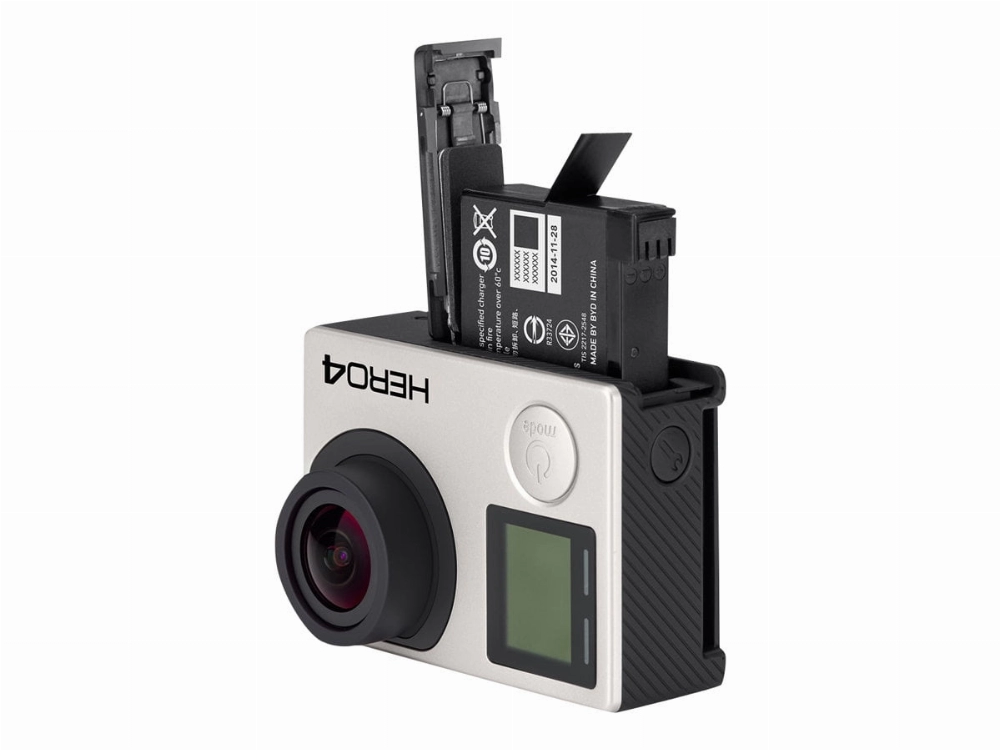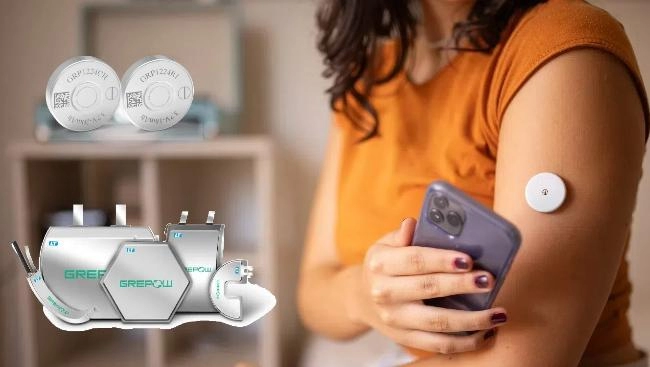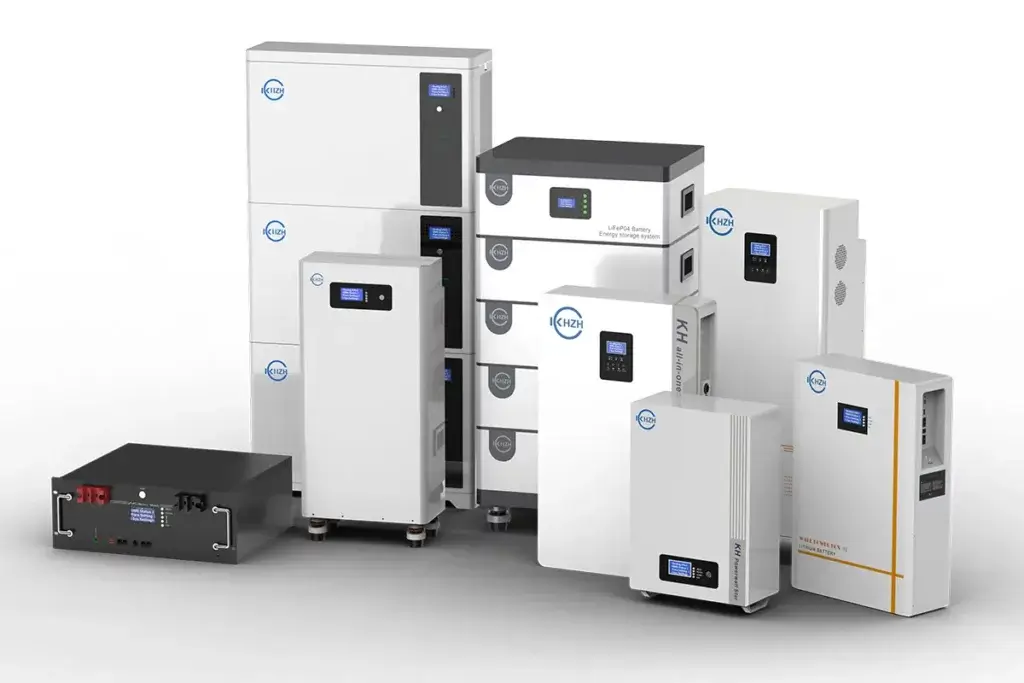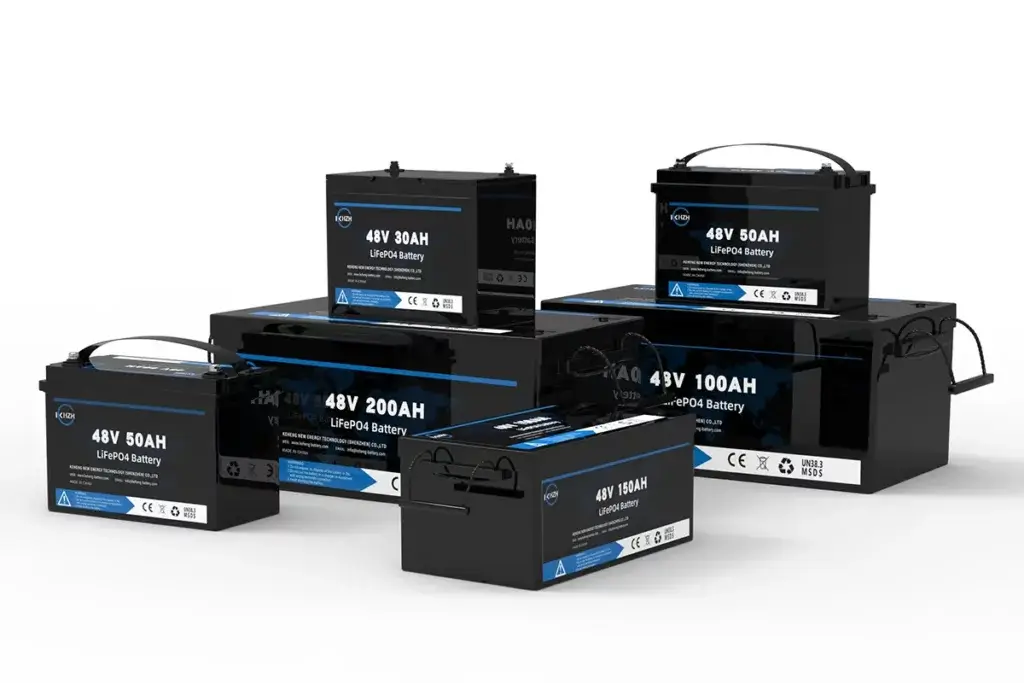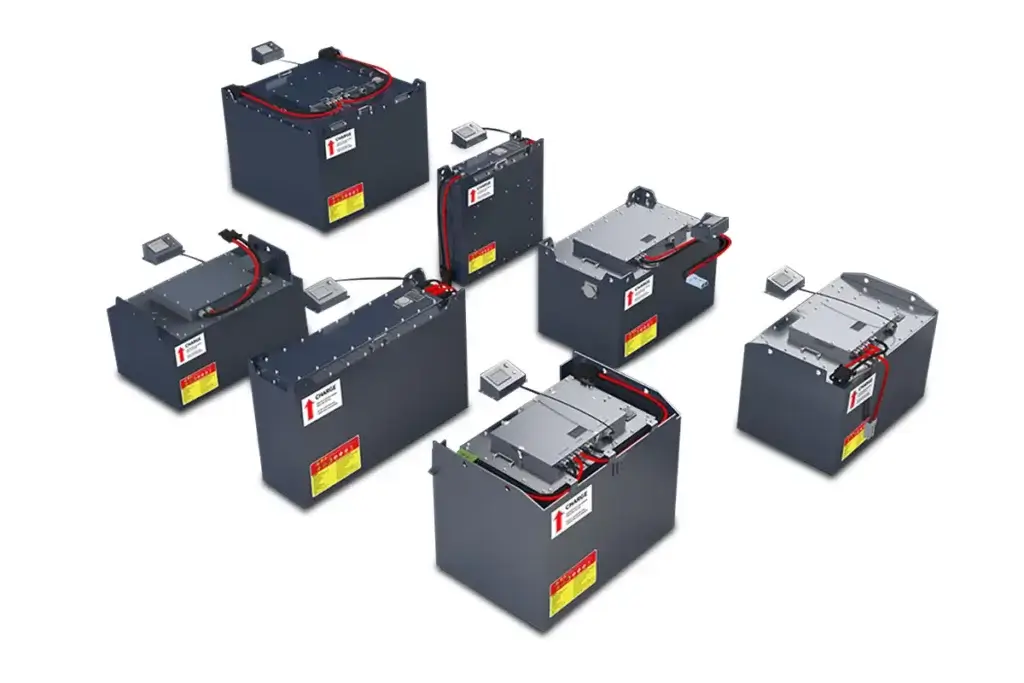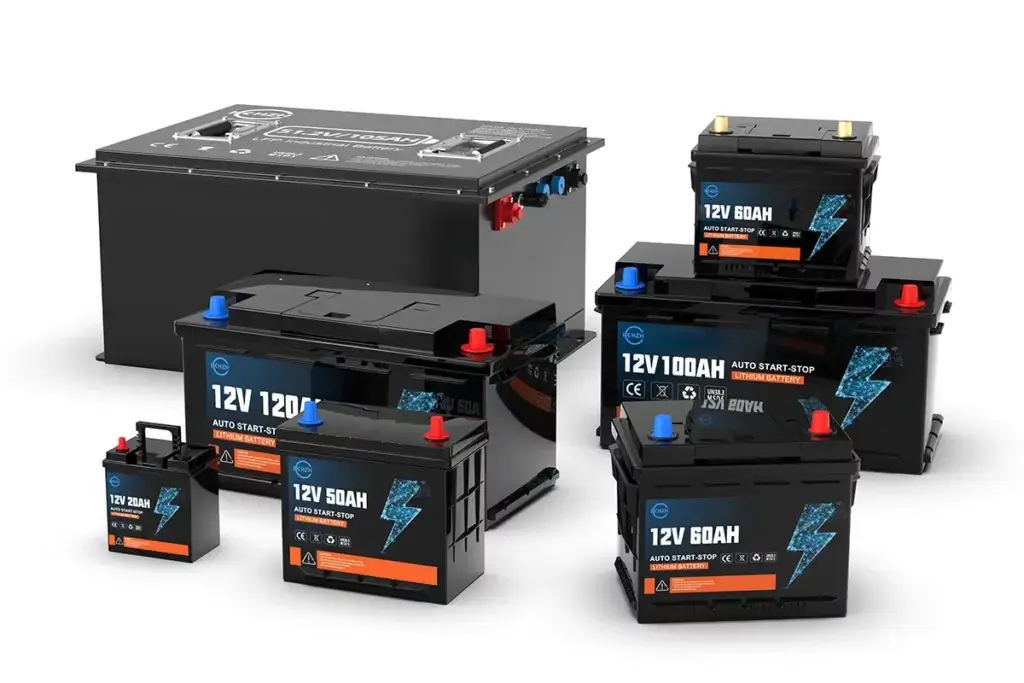Choosing the Right Flashlight Battery: A Comprehensive Guide
With a wide variety of batteries available on the market, choosing the right flashlight battery can be a bit challenging. Whether you’re looking to find the best rechargeable flashlight battery or deciding between 18650 and 26650 batteries, understanding the specific characteristics of each battery can significantly enhance your flashlight’s performance. In this detailed guide, we’ll break down the various types and sizes of flashlight batteries and provide expert advice on selecting the best one for your needs.
Part 1: Flashlight Battery Types
Flashlight batteries typically fall into three main categories: Lithium-ion batteries, Nickel-metal hydride (NiMH) batteries, and Other battery types. Each type has its unique advantages, making it suitable for different flashlight applications.
Lithium-ion Batteries
Lithium-ion batteries are known for their high energy density and long shelf life. These batteries are often the preferred choice for flashlights and come in various sizes, such as 18650, 26650, and 21700. If you’re interested in learning more about these high-performance batteries, check out our Lithium Battery Energy Storage and Application Guide.
Nickel-Metal Hydride (NiMH) Batteries
Nickel-metal hydride (NiMH) batteries are rechargeable and offer a more cost-effective option.
Other Battery Types
This category includes alternative options such as 6V and 12V block batteries, as well as the smaller 4LR44, also known as AG13.
Part 2: Flashlight Battery Sizes
Lithium-ion Batteries
18650 Battery
- Specifications: An 18650 battery has a diameter of 18mm and a length of 65mm. It offers a voltage of 3.7V and a capacity typically ranging from 2500mAh to 3500mAh.
- Features: 18650 batteries are known for their high energy density and longer run times, making them ideal for high-performance flashlights.
- Suitability: Ideal for tactical flashlights, high-powered LED lights, and devices requiring long run times and high output.
26650 Battery
- Specifications: A 26650 battery has a diameter of 26mm and a length of 65mm, offering a voltage of 3.7V and a capacity ranging from 4000mAh to 5000mAh.
- Features: These batteries offer higher capacity and longer run times, making them particularly suitable for heavy-duty flashlights.
- Suitability: Commonly used in searchlights, high-lumen spotlights, and high-powered handheld spotlights for outdoor use.
21700 Battery
- Specifications: A 21700 battery has a diameter of 21mm and a length of 70mm. It offers a voltage of 3.7V and a capacity ranging from 3500mAh to 4500mAh.
- Features: 21700 batteries offer a balance between capacity and performance, making them increasingly popular in modern flashlight designs.
- Suitability: Ideal for everyday carry (EDC) lights, bicycle lights, and tactical flashlights requiring a smaller form factor.
16340 (CR123A) Battery
- Specifications: A 16340 battery, also known as CR123A, has a diameter of 16mm and a length of 34mm. It offers a voltage of 3.0V to 3.7V and a capacity ranging from 600mAh to 1000mAh.
- Features: CR123A batteries are known for their high voltage and excellent storage life, making them ideal for devices requiring long-term storage or infrequent use.
- Suitability: Commonly used in compact flashlights, weapon-mounted lights, and security cameras due to their small size and powerful energy output.
14500 Battery
- Specifications: A 14500 battery has a diameter of 14mm and a length of 50mm, offering a voltage of 3.7V and a capacity typically ranging from 600mAh to 1000mAh.
- Features: 14500 lithium-ion batteries are similar in size to AA batteries but provide a higher voltage and energy density, making them ideal for compact flashlights demanding higher power output.
- Suitability: Great for mini flashlights, penlights, and keychain lights where space is limited but performance is critical.
18350 Battery
- Specifications: An 18350 battery has a diameter of 18mm and a length of 35mm, with a voltage of 3.7V and a capacity ranging from 800mAh to 1200mAh.
- Features: Despite their smaller size, 18350 batteries offer a good balance of capacity and power, making them suitable for compact flashlights.
- Suitability: These are ideal for smaller flashlights, providing excellent portability and decent power output.
At KHZH, we understand the importance of choosing the right flashlight battery for your needs. By considering the battery size and type that fits your flashlight’s specifications, you can ensure optimal performance and longevity. Whether you need a lightweight option for everyday carry or a heavy-duty battery for demanding tasks, this guide will help you choose the best battery for your flashlight.
KHZH Flashlight Battery Guide
10180 Battery
- Specs: The 10180 battery is ultra-compact, measuring 10mm in diameter and 18mm in length. It typically operates at 3.7V with a capacity ranging from 70mAh to 120mAh.
- Features: Despite its small size, the 10180 battery offers excellent compactness and convenience, making it ideal for miniature flashlights and keychain lights where space is at a premium.
- Suitability: Best suited for pocket-sized flashlights, emergency lights, and keychain flashlights, where space is limited but occasional use is needed.
CR2 Battery
- Specs: The CR2 battery measures 15.6mm in diameter and 27mm in length. It operates at 3.0V to 3.2V and offer a capacity of 600mAh to 900mAh.
- Features: CR2 batteries strike a balance between size and power, making it a suitable choice for specific flashlight designs.
- Suitability: Commonly used in laser pointers, digital cameras, and specialized flashlights that require a compact yet powerful energy source.
CR2450 Battery
- Specs: The CR2450 is a button/coin cell battery with a diameter of 24.5mm and a thickness of 5mm, providing a 3.0V voltage and a capacity ranging from 600mAh to 700mAh.
- Features: The CR2450 battery is small yet sufficient in capacity for specialized flashlight applications.
- Suitability: Occasionally used in specialty flashlights, keychain lights, and small electronic devices where space is limited and power consumption is low.
NiMH Batteries
AA (HR6) Battery
- Specs: AA NiMH batteries measure 14.5mm in diameter and 50.5mm in length, with a voltage of 1.2V and a capacity ranging from 2000mAh to 3000mAh.
- Features: NiMH AA batteries are rechargeable and offer excellent capacity and performance, making them an economical and environmentally friendly choice for flashlight users.
- Suitability: Suitable for a wide range of flashlight models, including EDC flashlights, camping lanterns, and household flashlights that use AA batteries.
AAA (HR03) Battery
- Specs: AAA batteries are smaller, measuring 10.5mm in diameter and 44.5mm in length. They offer a voltage of 1.2V and a capacity of 600mAh to 1000mAh.
- Features: While smaller than AA batteries, AAA NiMH batteries offer similar performance and are compatible with rechargeable technology, making them ideal for compact flashlight designs.
- Suitability: Well-suited for mini flashlights, headlamps, and other lightweight, small-form-factor devices.
C (HR14) Battery
- Specs: C batteries measure 26.2mm in diameter and 50mm in length, providing a voltage of 1.2V and a capacity of 2500mAh to 4500mAh.
- Features: NiMH C batteries offer higher capacity and longer runtime than AA and AAA batteries, making them a reliable choice for flashlights and devices with greater power demands.
- Suitability: Ideal for heavy-duty flashlights, camping lanterns, and emergency lights that require long-lasting and reliable performance.
D (HR20) Battery
- Specs: D batteries measure 34.2mm in diameter and 61.5mm in length, providing a voltage of 1.2V and a capacity of 5000mAh to 10000mAh.
- Features: As the largest standard NiMH battery size, D batteries offer the highest capacity and longest runtime, making them ideal for high-powered flashlights and devices that require sustained high-energy output.
- Suitability: Commonly used in industrial flashlights, emergency lighting systems, and outdoor lanterns where reliability and performance are critical.
9V Block Battery
- Specs: 9V batteries are rectangular, with approximate dimensions of 26.5mm x 17.5mm x 48.5mm. They provide a voltage of 9V and typically have a capacity of 500mAh to 600mAh.
- Features: 9V batteries are known for their compact design and versatility.
- Suitability: Well-suited for smoke detectors, radios, and certain flashlight models that require a stable 9V power source.
Conclusion
At KHZH, we offer a wide range of batteries to meet all your flashlight needs, from ultra-compact options like 10180 and CR2 batteries to high-capacity choices like AA, C, and D. Whether you’re looking for everyday reliability or specialized power, our selection ensures you’ll find the most suitable battery for all flashlight applications.
Flashlight Batteries: The Essential Guide
9V Block Batteries
Specifications:
9V block batteries typically have a capacity between 400mAh and 600mAh, providing a voltage of 9V.
Features:
9V block batteries are commonly used in devices requiring multiple cells or a compact power source, offering a high voltage that makes them well-suited for flashlights, smoke detectors, wireless microphones, and other similar devices.
Suitability:
These batteries are suitable for specific flashlight models, as well as smoke detectors and wireless microphones, providing reliable and long-lasting power.
6V Block Batteries
Specifications:
6V block batteries typically measure around 34mm x 17mm x 67mm and provide a voltage of 6V. Their capacity usually ranges from 4000mAh to 8000mAh.
Features:
6V block batteries offer a higher voltage than standard AA or AAA batteries, making them ideal for specific flashlight models and devices that require a higher wattage.
Suitability:
These batteries are often used in older flashlight designs, portable spotlights, and emergency lighting systems, where 6V compatibility is essential.
12V Block Batteries
Specifications:
12V block batteries typically measure around 34mm x 17mm x 67mm, providing a voltage of 12V, with a capacity ranging from 3000mAh to 6000mAh.
Features:
12V block batteries offer a higher voltage compared to 6V batteries, making them well-suited for higher-powered flashlight models and devices needing a 12V power source.
Suitability:
These batteries are used in specialized flashlights, vehicle lights, and other applications where a high voltage is necessary to ensure optimal performance.
4LR44 (AG13) Batteries
Specifications:
4LR44 batteries are small button-cell batteries with a diameter of 11.6mm and a thickness of 5.4mm. They provide a voltage of 1.5V and typically have a capacity between 100mAh and 200mAh.
Features:
Despite their small size, 4LR44 batteries can provide adequate voltage and capacity for specific flashlight applications.
Suitability:
These batteries are commonly used in compact flashlights, keychain lights, and electronic devices that require a small power source.
Choosing the Right Flashlight Battery
Understand Your Flashlight’s Requirements
Before selecting a battery, it’s essential to understand your flashlight’s specifications, including voltage, size, and power consumption.
Consider Battery Chemistry
Flashlight batteries come in various chemistries, such as lithium-ion, nickel-metal hydride (NiMH), and alkaline. Choose the chemistry that best fits your needs.
Evaluate Voltage and Capacity
The voltage and capacity of a battery directly impact the performance and runtime of your flashlight. Higher voltage provides more power, while higher capacity ensures longer runtimes between charges or replacements.
Check Size and Form Factor
A mismatched battery size can lead to poor performance or damage to your flashlight.
Consider Rechargeable Options
Opting for rechargeable batteries and a compatible charger can result in long-term savings.
Check Compatibility
Not all flashlights are compatible with all battery types. Always check the manufacturer’s recommendations to ensure compatibility and avoid damaging your flashlight.
Assess Environmental Conditions
Consider the environments in which you’ll be using your flashlight. For extreme temperatures or outdoor activities, choose durable batteries that can withstand harsh conditions.
Consider Long-Term Costs
While rechargeable batteries may have a higher upfront cost, they can save you money in the long run compared to disposable batteries.
Frequently Asked Questions (FAQ)
What are the most common flashlight battery sizes?
The most common flashlight battery sizes are AA, AAA, CR123A, and 18650. The best size depends on your flashlight model and its power requirements.
What is the difference between 18650 and 26650 flashlight batteries?
18650 batteries are smaller than 26650 batteries; the latter offers higher capacity (in mAh) and longer runtimes, making them suitable for more demanding flashlight applications.
How to Identify Battery Sizes
To identify the size of a battery, check the label on the battery itself or refer to the user manual of your flashlight for compatibility information.
Common Flashlight Battery Sizes
Common flashlight battery sizes include AA, AAA, and CR123A, among others. Additionally, other battery models may be used depending on the design and power requirements of the flashlight.
Best Batteries for Flash Photography
For flash photography, photographers often opt for rechargeable lithium-ion batteries or high-capacity AA batteries. These batteries provide reliable, fast, and consistent power for flash units. For a better understanding of battery types suitable for various applications, including flash photography, you can refer to this article on Best Batteries for Solar Off-Grid Systems, which also shares insights on battery efficiency and longevity.
More Articles:
-
How to Safely Clean Corroded Battery Leads: A Step-by-Step Guide
This guide provides the necessary steps, safety precautions, and methods for properly cleaning corroded battery leads. -
Portable Battery Charger vs Power Bank: What is the Difference?
A portable battery charger refers to any device that can charge electronic devices on the go. A power bank, on the other hand, is an energy storage device that can charge devices without being connected to a power source. -
The Ultimate Guide to Using a Lithium-Ion Jump Starter
A comprehensive guide to using a lithium-ion jump starter, covering its safety, maintenance, and how they are a smart investment for emergencies. -
What is a Portable Battery Charger?
Learn what a portable battery charger is, its materials, and how it functions to keep your devices powered on the go. -
How to Choose the Best Battery Pack for Your Needs: Capacity, Performance, and More
This guide will help you select the ideal battery pack, considering factors like capacity, safety, and performance.

